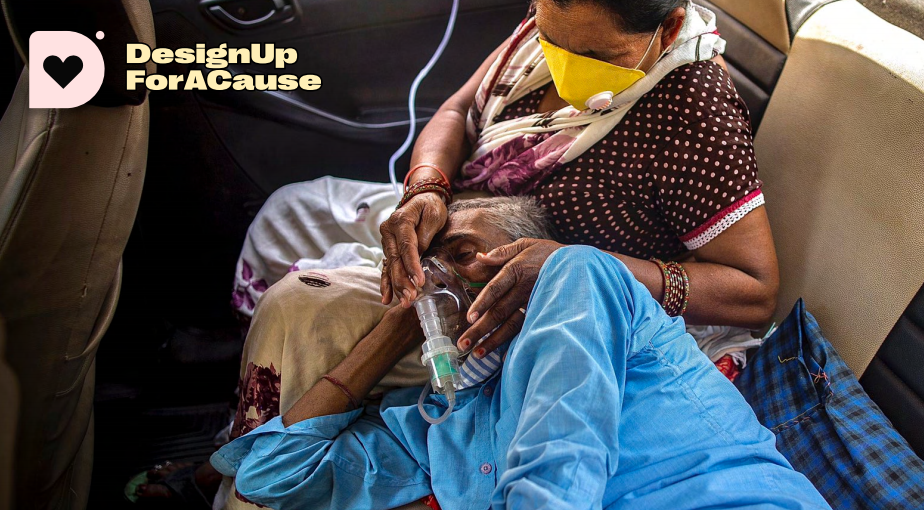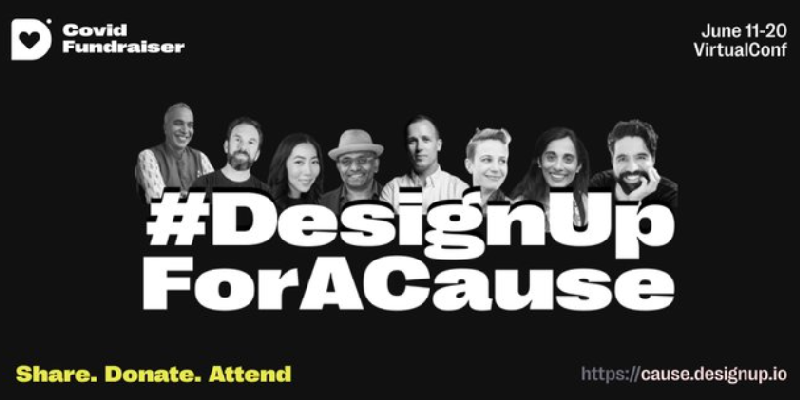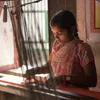Adeola Enigbokan is an environmental psychologist, combining deep knowledge of human behavior and emotional intelligence, with a sense of how social and spatial systems work and how creative change happens. She consults on the design of urban housing, workspaces, public space and emerging technologies, and will be speaking at the DesignUp 2021 conference launching next week.
This year, the DesignUp 2021 conference team’s response to India’s apocalyptic second wave of the COVID-19 pandemic is to organise a virtual fundraising drive along with the stellar lineup of speakers. To be held on the weekends of June 11-20, 100 percent of donations will go to charities, bringing much-needed relief to rural India in the form of dry rations, oxygen concentrators, and health centre wards.
As media partner for the conference series, see YourStory’s coverage of DesignUp’s earlier online panels in 2020, May the Fourth be with you and The pandemic’s impact on design. See also our write-ups on the annual DesignUp conference editions from 2019, 2018 and 2017, and our d-Zen (‘Design Zen’) section for more design resources.
Adeola Enigbokan joins us in this chat on design in the pandemic era, leadership opportunities, and educational collaboration. She holds a doctorate in Psychology from the CUNY, and a BA in Anthropology from Columbia University. She has lived and worked in Seattle, New York, Moscow, and Amsterdam.
Her work has appeared internationally at the Stedelijk Museum (Amsterdam), Queens Museum (New York), Multimedia Museum of Art (Moscow), Royal Geographical Society (London), and Beijing Normal University.
Edited excerpts of the interview below:
[YS]: What are three outstanding examples you have seen of effective design during the pandemic?
Adeola Enigbokan [AE]: Here, in Mexico City, I noticed the local practice of lowering a shopping bag on a rope from top floor windows of apartment buildings to the street, to collect groceries or food ordered from neighbourhood shops or roadside vendors.
It was very effective and convenient. It was a simple pre-pandemic practice that, during the pandemic, allowed people to continue to support local and informal businesses without increasing the risk of infection through contact.
Another example is any service that allows people to share passive, yet restorative, time together, without having to actively engage with each other, or with the service itself over extended periods.
For example, I have greatly appreciated DJ sessions provided via services like Twitch. I can hear well-curated DJ sets over the course of a day, listen along with friends around the city or the world, without having to engage actively (as in a videoconference, for example), other than to leave a tip for the musicians, of course! Another example of this is well-organised meditation retreats or gatherings online.
And finally, I have never been more appreciative of well-cared-for city parks, green spaces, and urban wilderness. To have access to fresh air and other non-human living creatures during the pandemic, has been a blessing. However, such access should not be a luxury, but a right of all people who live in the urban places hardest hit by the pandemic.

[YS]: What are some notable projects or research initiatives you are currently engaged in?
[AE]: The most interesting projects I have been involved in the last year have been, in no particular order:
- Advising the leadership team of a multinational design and architecture firm about how to align their strategic goals for the next few years with their workplace culture, by transforming their approach to talent management and cultivating and promoting leaders.
- Joining with the neighbours in my building to successfully protest and prevent the new property management company from cutting down the courtyard tree and the vines growing over our fence, and replacing them with plastic "decorations."
- Co-writing and researching a piece about the connection between cultivating and maintaining difficult friendships, achieving social justice, and the role of architecture and urban design in this process.
- Being the external critic/advisor for the thesis year in Graphic Design at the Royal Academy of Art in The Hague.
The students of graphic design have taught me a lot about what we can expect in terms of courage and voice from the emerging generation of designers, by taking on issues as diverse as Artificial Intelligence, Colonialism, Gamification, Gender Nonconformity, Feminism, Care for natural environments, Cryptocurrency and Children's Education, among other things.
[YS]: What are ways in which industry and academia can collaborate to improve design education?
[AE]: Industry can do more to commit to sustaining free and open public education from pre-school to the university level, by contributing financially to this effort. They can provide well-paid apprenticeships, support student-led design initiatives, and support paid parental leave for employees wherever possible.
Industry can also commit to professional education and development of employees by providing them ongoing paid training and one-on-one leadership coaching. They can support further formal education where necessary, as well as sabbaticals and flexible time for employees to pursue their curiosity and inspiration.
Formal design education could benefit greatly from an increased emphasis on practical skillsets (for example, effective written and verbal business communication, non-violent mediation and conflict resolution, people, organisation, management and leadership skills). They can also provide students with greater exposure to current industry professional practices earlier in their courses, and provide opportunity for students to critique and analyse these practices.

[YS]: What are three daily habits of yours that you think help in strengthening your design sensibilities?
[AE]: Daily self-reflection (writing), meditation, and sweeping and cleaning the outdoor areas of my living space have been very helpful to my practice.
[YS]: From your reading list, what are some good books about design you would recommend?
[AE]: These days, I think designers might benefit from reading more books that are not explicitly about design, for example:
Set Boundaries, Find Peace, by Nedra Glover Tawwab
No Hard Feelings: The Secret Power of Embracing Emotions at Work, by Liz Fosslien and Mollie West Duffy
Dare to Lead by Brene Brown.
[YS]: What are the leadership opportunities for designers in a world where inclusion and environmental sustainability are becoming key concerns?
[AE]: Designers have the opportunity to lead by demonstrating in practical ways the great results that we can get across social and technological systems by centering the needs of all living things in decision-making processes.
Because designers trade primarily in perception — how we see the world and our possibilities within it — design leadership is strongest when it successfully shifts perception about who or what is "the problem" or "the solution" or "the client." The current issues we face around who is excluded from social mobility and how quickly our environment seems to be collapsing around us, are not disconnected.
As the recent disaster of rural-to-urban labour migrants stranded at the outbreak of the pandemic showed: our environments are only as sustainable as our structural ability to care for our neighbours. It is the task of designers to see connections like this and to make sure that such insights play a role in how we frame problems and how we present targeted design solutions.
It is OK, and necessary, to challenge existing business models in order to expand the perception of what is possible now.
Edited by Kanishk Singh
Link : https://yourstory.com/2021/06/designup-2021-adeola-enigbokan
Author :- Madanmohan Rao ( )
June 05, 2021 at 07:05AM
YourStory


